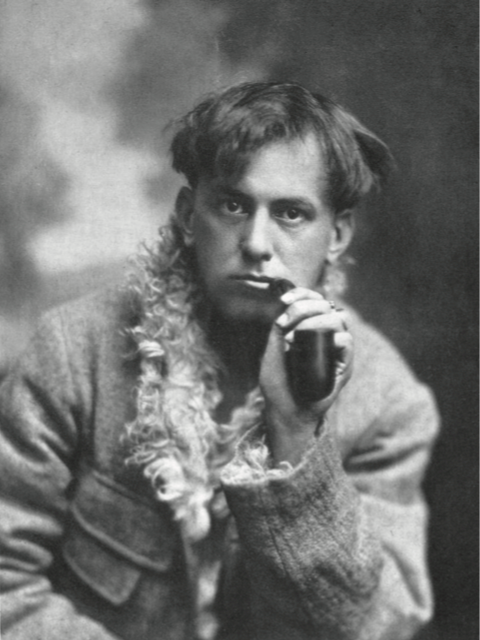4. Aleister Crowley
Supplemental
Go to next point of interest >
It is difficult to know where to start when talking about Aleister Crowley. A name known to history for being controversial and taking part in clandestine religious practices, Crowley has influenced the alternative world of mysticism and the occult and much of popular culture in music, film and literature since the beginning of the twentieth–century. He was one of the many famous faces on The Beatles’ Sgt. Peppers Lonely Hearts Club Band, and was featured number 73 in BBC’s 100 Greatest Britons in 2002. Still, he was a man that has been greatly misunderstood in popular media both during his lifetime and after, and is deserving to be treated as a historical figure in his own right—someone who has influenced culture significantly during his life and after his death.
Crowley was born in 1875 to a wealthy family in Royal Leamington Spa, Warwickshire England. His parents were devout members of the fundamentalist Christian sect known as the Plymouth Brethren, and so his childhood in the late nineteenth–century would have been of a strict religious upbringing. Crowley came to resent this greatly, especially after the death of his father and Crowley’s upbringing being taken over by the school headmasters who were anything but lenient on the children. As a young man, Crowley entered Trinity College at Cambridge, meandering within the circles of art, literature, and classical education. Crowley’s rejection of the traditionalism within Christianity grew as he found the free-thinking world of university liberating, but yet there was a spiritual vacancy left, a religious thirst that his upbringing had instilled but was not being fulfilled by his education. He sought to pry deeper into the mysteries of the universe. He would in 1898 be introduced to a secret society known as The Hermetic Order of the Golden Dawn, an organisation formed by high-ranking Freemasons who wished to study and practice the occult arts of the Western mystical tradition.

Now, when we say the word, “occult,” what comes to mind? Typically, the images evoked are that of goat skulls, naked people on altars and figures in hooded black robes conducting black magic. But I assure this popular depiction of the occult is typically no older than the countercultural years of the 1960s and 1970s; and we can thank classic horror films such as Wickerman and The Devil Rides Out for this imagery of devil worship and satanism associated specifically with the occult. It is a far cry from what we as scholars know as the modern occult. But in order to explain this, we have to take a small diversion to the eighteenth century, or what we know at the period of Enlightenment.
Also called the “Age of Reason,” the enlightenment was a philosophical trend in which many prevailing ideas that make up our modern society today emerged. Freedom, the pursuit of happiness, the search for truth based on reason, scientific discovery, liberty, progress, fraternity, and constitutional government were the hallmarks of the enlightenment. It was a time when the absolute authority of the church and monarchs were brought into question and the modern birth of democracy was established.
But the idea of individual freedom was more than just a cultural and political trend. We must remember that the Protestant revolution and all its effects were well under way by the eighteenth–century. There were various mystical currents underlying the enlightenment as well, if not sharing the ideas of individualism and liberty that characterise this period, these mystical currents at the same time typify a reaction to the cold and calculating developments of reason and scientific rationalism that also make up the enlightenment. We find here an emphasis on “initiation,” a means by which a secret and arcane knowledge of spiritual wisdom may be imparted upon a worthy candidate, for the purpose of coming to greater awareness of their person and their place within the world. This was a ancient wisdom, long lost in the dark ages, but which now, thanks to our enlightenment approach to the world we can now uncover once again.

Here we see the emergence of illuminist societies such as Freemasonry and a number of off-shoots like it. A romantic search back into history to discover the ancient wisdom tradition, a tradition of spiritual teachings embodied in Jesus and Moses, and in many cases links to a pre-Christian era found in the Greek and Roman mythologies, and especially in ancient Egypt. These ideas blended with Christian and Jewish mysticism so that a cohesive arcane wisdom could be discovered and finally applied to bring humanity to a greater understanding of the world. Rosicrucianism, alchemy, and theosophy became blended with initiatory ceremonies in order to bring the common man to a better understanding of himself and God. Eventually, even the ideas of scientific knowledge were incorporated into this. It was believed that through this modern mysticism we could find scientific evidence for spirituality. This is what the modern occult of the nineteenth–century was looking for. With the advent of modern psychology and the desire to understand better what made human beings tick, the occult sought to spiritualize this science.
This is the environment that Alesiter Crowley was introduced to when he was brought into the Hermetic Order of the Golden Dawn. It was a Secret Society in Britain, formed by high ranking freemasons and with members who were affluent and educated people of society, artists, poets, actors and actresses. The organisation blended the entire western mystical tradition: magic, alchemy, astrology, tarot, qabalah with unique imagery from Egypt and Judeo-Christianity in an intricate system of initiation.

Aleister Crowley was initiated into the organization in 1898 and quickly rose through the ranks, becoming one of its most prominent members, and it was during his study within this group that he came across a curious manuscript called The Sacred Magic of Abramelin the Mage, translated only recently at the time into English by the head of the Golden Dawn, Samuel Mathers. The book describes the process of an extensive ritual known as the Abramelin Operation.
The Abramelin operation, also known as the “Abramelin ritual,” enables the practitioner to attain spiritual enlightenment and communicate directly with their guardian angel. The ritual involves an intense period of six months of purification and meditation, followed by a series of evocations of spirits that are constrained and commanded for protective purposes so that the practitioner can finally come into contact with their holy guardian angel. The Abramelin operation is considered a complex and demanding ritual of daily fasting and prayer and is not widely practised in the modern world. It is generally considered a personal and spiritual undertaking rather than a public or communal one.
Crowley, being an ambitious student of the mysteries was eager to attempt this enduring albeit dangerous ritual, but he needed the perfect place to do it. He needed place with seclusion, wilderness, and running water. But one of the peculiar specifications outlined in the Abramelin ritual was the need for a doorway leading north. This is because the various spirits, angels and demons called upon throughout the ceremony would need a place outside of the temple chamber to be confined to the north but to also be accessible should any need arise whilst performing the ceremony.
If I turn your attention to the door leading to the terrace, you will find above the old wooden lintel that this was in fact once a window. It is understood that Crowley installed this door to fulfill the need for doing the Abramelin ceremony. This of course explains the strange quirk to the otherwise Georgian symmetry to the loch facing elevation of the building.
Crowley purchased Boleskine House in August 1899, but did not complete the ritual. At the time he was undergoing the preliminaries, that is all the fasting, prayer and evoking of spirits, he was also seeking approval by the Golden Dawn for his initiation into the higher tiers. But his free-spirited and flamboyant reputation preceded him and the high ranking members of the London lodge blocked his advancement. However, in Paris the head of the Golden Dawn Samuel Mathers doted on Crowley for his ambition and invited him to take his initiation in Paris. Mathers was already unpopular in London for being a surrogate ruler and overriding the members’ decisions. Crowley’s advancement was the last straw and the episode led to a schism in and eventual dissolution of the Golden Dawn in 1900.
Crowley left the Abramelin operation at Boleskine disillusioned with occult societies and their social squabbling over spiritual and social prestige. Yet he would call Boleskine his residence until 1913, when he would sell Boleskine and head to America for the next six years while the Great War was well underway.
Crowley has remained an influential figure throughout the twentieth–century, especially in popular culture as a counter cultural icon. Many characters in fiction and film have been based off of Crowley, and he has been featured in many songs and albums by musicians. One of the most well known examples of this is Jimmy Page of Led Zeppelin. Page was known to have a long-standing interest in the occult and has been associated with several controversial figures and practices over the years. He was an avid collector of Crowley memorabilia, so much that in 1971 he purchased Boleskine House. Page reportedly made extensive renovations to the property, including the construction of a large outdoor stage and the installation of a custom-designed recording studio. It is rumored that many of Led Zeppelin’s songs were recorded at Boleskine House, although this has never been confirmed. Parts of the film were filmed right here on the Boleskine grounds.

Page’s interest in the occult continues to be a source of popular intrigue and mystery, and Led Zeppelin fans all over the world still speculate about it. Before you ask, yes we have reached out to Jimmy but we haven’t yet made any contact. We will continue to try, as we know how much he likes historic buildings and cares about their preservation.
